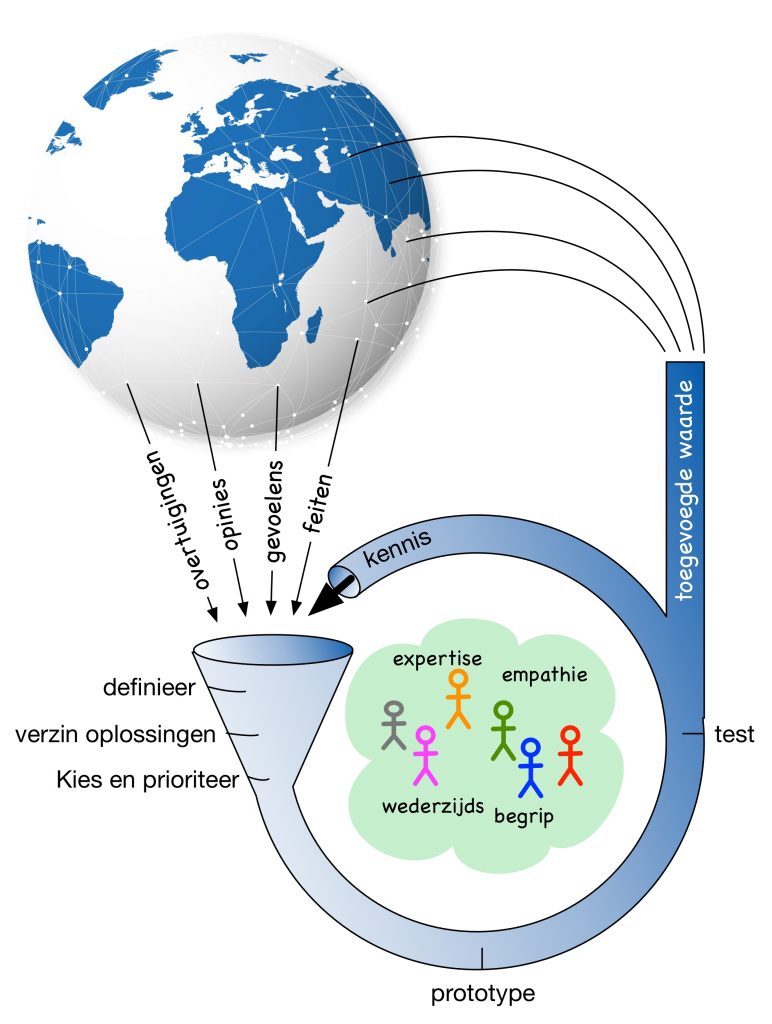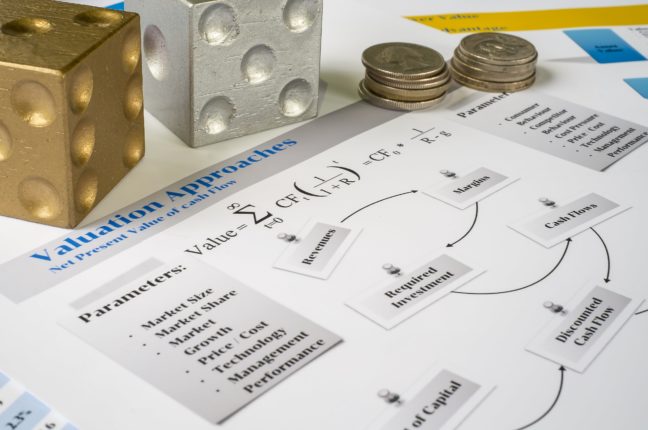Most organisations struggle with the way to choose and prioritise ideas for software development. Effective communication, sharing of convictions and a strong focus on learning will help to be innovative without loosing control. Most software development organisations have an agile process in place. To improve effectiveness they should invest in design thinking.
Questions asked frequently to me and my colleagues are: how do I determine a feature has value? How do you determine something has value to the business? How do you measure it? The reason for asking most of the time is a personal wish to improve something.
In many agile handbooks they say the product owner should decide. To support the decision making a lot of rule sets and formulas are available which try to objectify business value. But I think the answer isn’t that trivial.
What I notice is that the more effort one puts in grabbing the value the harder it gets to grab it.
I think the main reason for this is the role of uncertainty. Checklists, rules and formulas typically don’t take into account that not all is clear, that you don’t know all the parameters or not everyone agrees on the parameter values. It is easy to say “if this then that”, but if you don’t know if ‘this’ applies you still don’t know what to do or decide. The only way out is to act on estimates, convictions or believes.
For a startup this is easy. You have a great idea and are you are convinced people are waiting for this. You are prepared to work night-and-day to prove you are right. You have a vision and are totally committed to realizing it. Finally you either come to the conclusion it doesn’t work, you run out of money or you end up as CEO of a highly valued company:-)
The problem with large organizations is that in order to be effective not only a lot of persons have to share the convictions and believes but they also have to commit themselves to proving them as well. Complicating factor is they have a responsibility to a large number of shareholders regarding the going concern as well.
This brings me back to the questions asked.
In virtual all cases the real problem is they don’t know, understand or share the convictions or believes. They perceive the organization as indecisive or even fickle. This obviously has impact on the commitment of the ones involved as well. Who wants to work night-and-day for realising ideas they don’t really believe in?
So what to do?
The essence is: you have to invest in understanding your clients as well as each other, generate ideas and select and commit to ideas. These ideas are based on assumptions that represent risks for the company. Managing these risks requires an approach concentrated on validation of assumptions in economically the best order.
The solution is twofold. Use the design thinking concept for creating shared believes in order to focus and create commitment. Then, use your agile development proces as it is meant: fail fast, learn fast. For me the conclusion is that there are good practices to determine the value of ideas but from a development perspective the nr. 1 criterium should be: what is now the most important thing to learn.
I like to elaborate on this aspects in future blogs. Please feel free to react with opinions and ideas to support this process.


